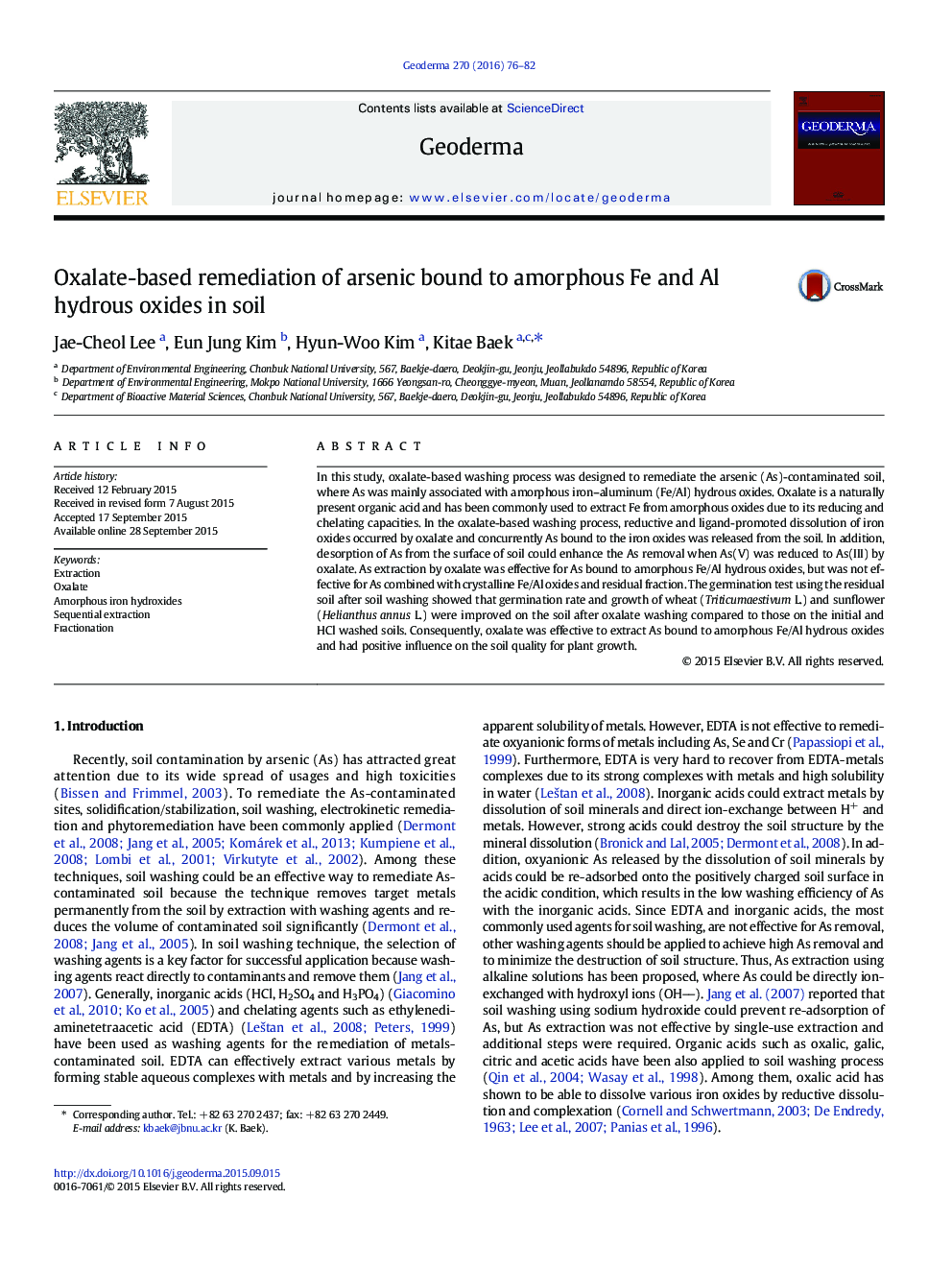| Article ID | Journal | Published Year | Pages | File Type |
|---|---|---|---|---|
| 4572959 | Geoderma | 2016 | 7 Pages |
•Arsenic bound to amorphous iron oxide was selectively extracted.•Reductive dissolution and chelating extraction mechanisms were proposed.•Germination test after soil washing confirmed the sustainability of process.
In this study, oxalate-based washing process was designed to remediate the arsenic (As)-contaminated soil, where As was mainly associated with amorphous iron–aluminum (Fe/Al) hydrous oxides. Oxalate is a naturally present organic acid and has been commonly used to extract Fe from amorphous oxides due to its reducing and chelating capacities. In the oxalate-based washing process, reductive and ligand-promoted dissolution of iron oxides occurred by oxalate and concurrently As bound to the iron oxides was released from the soil. In addition, desorption of As from the surface of soil could enhance the As removal when As(V) was reduced to As(III) by oxalate. As extraction by oxalate was effective for As bound to amorphous Fe/Al hydrous oxides, but was not effective for As combined with crystalline Fe/Al oxides and residual fraction. The germination test using the residual soil after soil washing showed that germination rate and growth of wheat (Triticumaestivum L.) and sunflower (Helianthus annus L.) were improved on the soil after oxalate washing compared to those on the initial and HCl washed soils. Consequently, oxalate was effective to extract As bound to amorphous Fe/Al hydrous oxides and had positive influence on the soil quality for plant growth.
